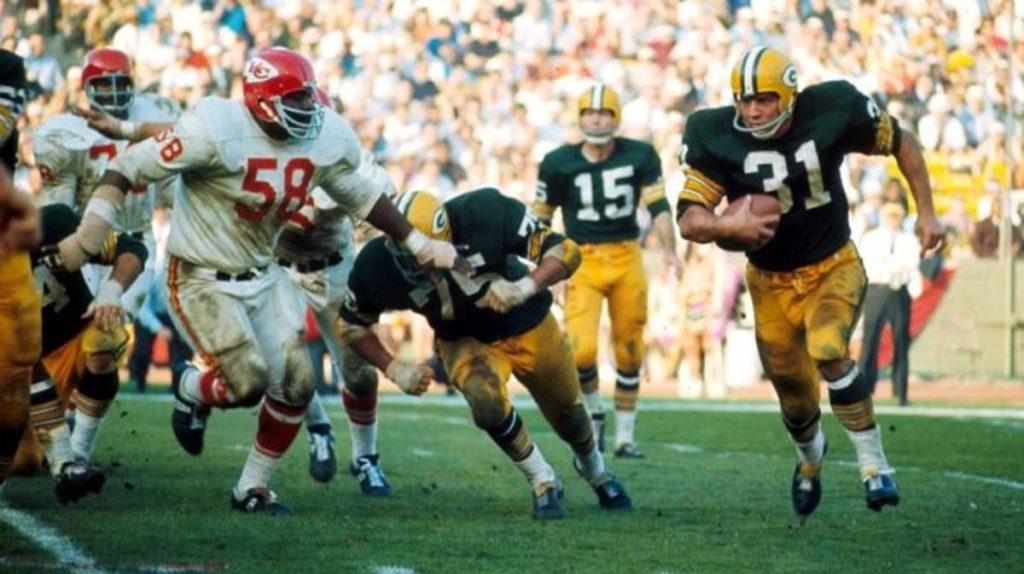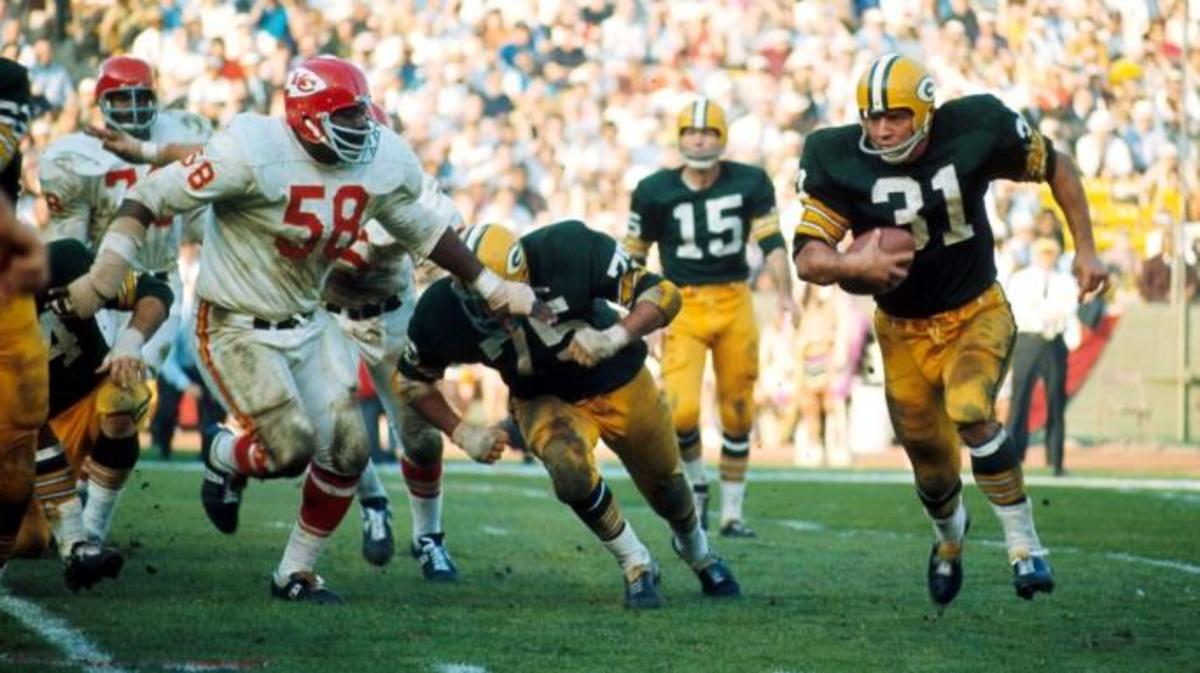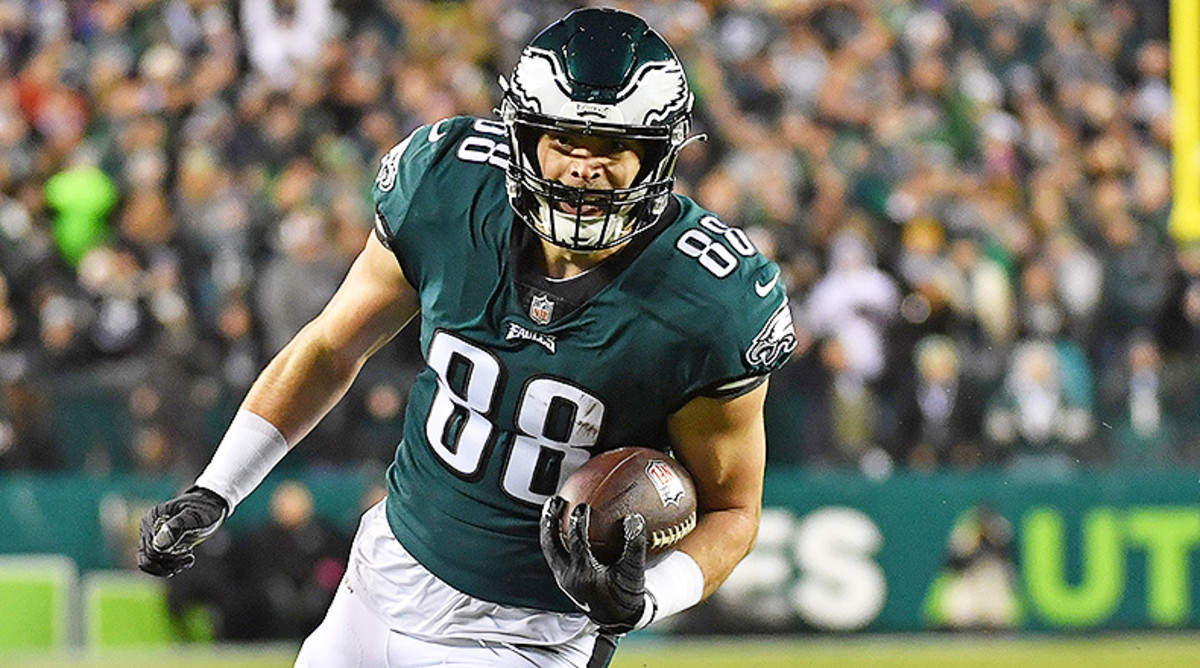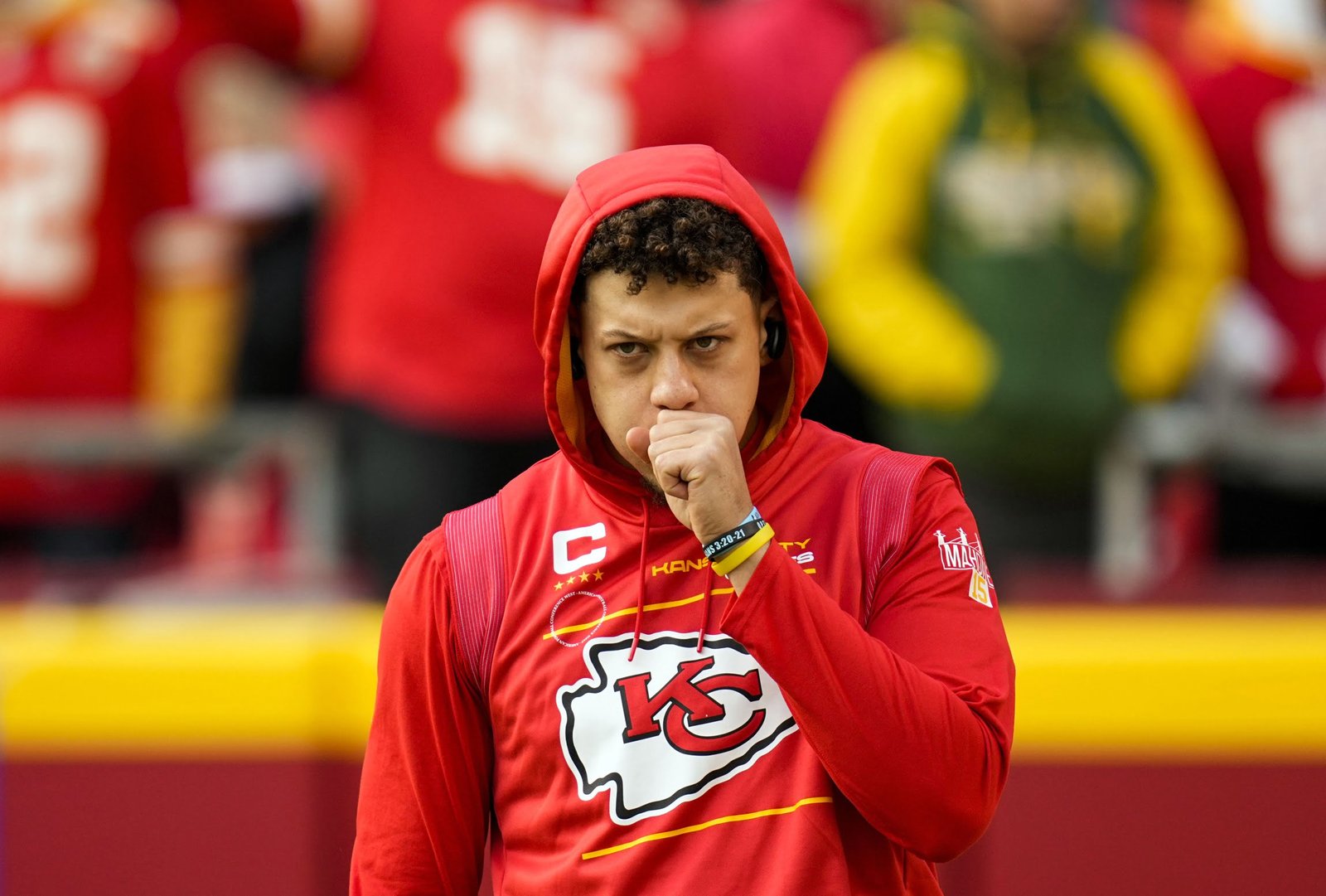Today in sports history, the Green Bay Packers defeated the Kansas City Chiefs in Super Bowl I. With a 35-10 drubbing of Kansas City, the Packers won the first of their four Super Bowl victories. As time has gone on, the Super Bowl has grown exponentially in popularity and lore. To think, it all started with one matchup back in 1967.

NFL & AFL Tensions
In 1960, the NFL had a true rival in the AFL. The two leagues did decide to not try to poach any players from the other league. Eventually, both sides went back on that which started heightening tensions between the two leagues. In 1966, the NFL and AFL reached a merger agreement. They established an “AFL-NFL World Championship Game” to determine which league had the best team. This game would later be known as the present-day Super Bowl.
Due to high tensions between the two leagues, both Kansas City and Green Bay felt extra pressure to win the game. Many analysts believed the NFL easily had the best players and therefore expected the Packers to blow out the Chiefs. The Packers were favored to win by 14 points. It surprised many when the game turned out to be competitive for the first half, with the Packers up 14-10.
In the third quarter, the game changed when Packers safety Willie Wood intercepted a pass and returned it to the Chiefs’ five-yard line. After that turnover, the Packers would go on to score 21 unanswered points to win 35-10. Packers quarterback Bart Starr would win the MVP award throwing for 250 yards, two touchdowns and one interception. The game would feature 14 future Hall of Fame players.
Super Bowl and NFL Fame Grows
As the years went on, the NFL’s popularity grew. With the leagues now combined into one, the new league housed all the best players in the world. With a higher level of play and with a game pitting the former leagues against each other, fans started to be drawn to the Super Bowl. The expansion of interest can be seen in the difference in advertising costs. A 30-second commercial cost $42,000 (approximately $350,000 in today’s money) for Super Bowl I. In comparison, a 30-second commercial in Super Bowl LV last year cost $5.6 million.
To this day, “Super Bowl Sunday” is one of the biggest days of the year. Many people, even if they aren’t necessarily fans of football, host Super Bowl parties. According to the Department of Agriculture, Super Bowl Sunday is America’s “second-largest food consumption day.” The day is another occasion for celebration in the United States and should only continue to grow as the NFL’s fan base grows as well.
Follow us on all of our social channels! Check out our Twitter, Facebook, YouTube and TikTok for more great FlurrySports content.





